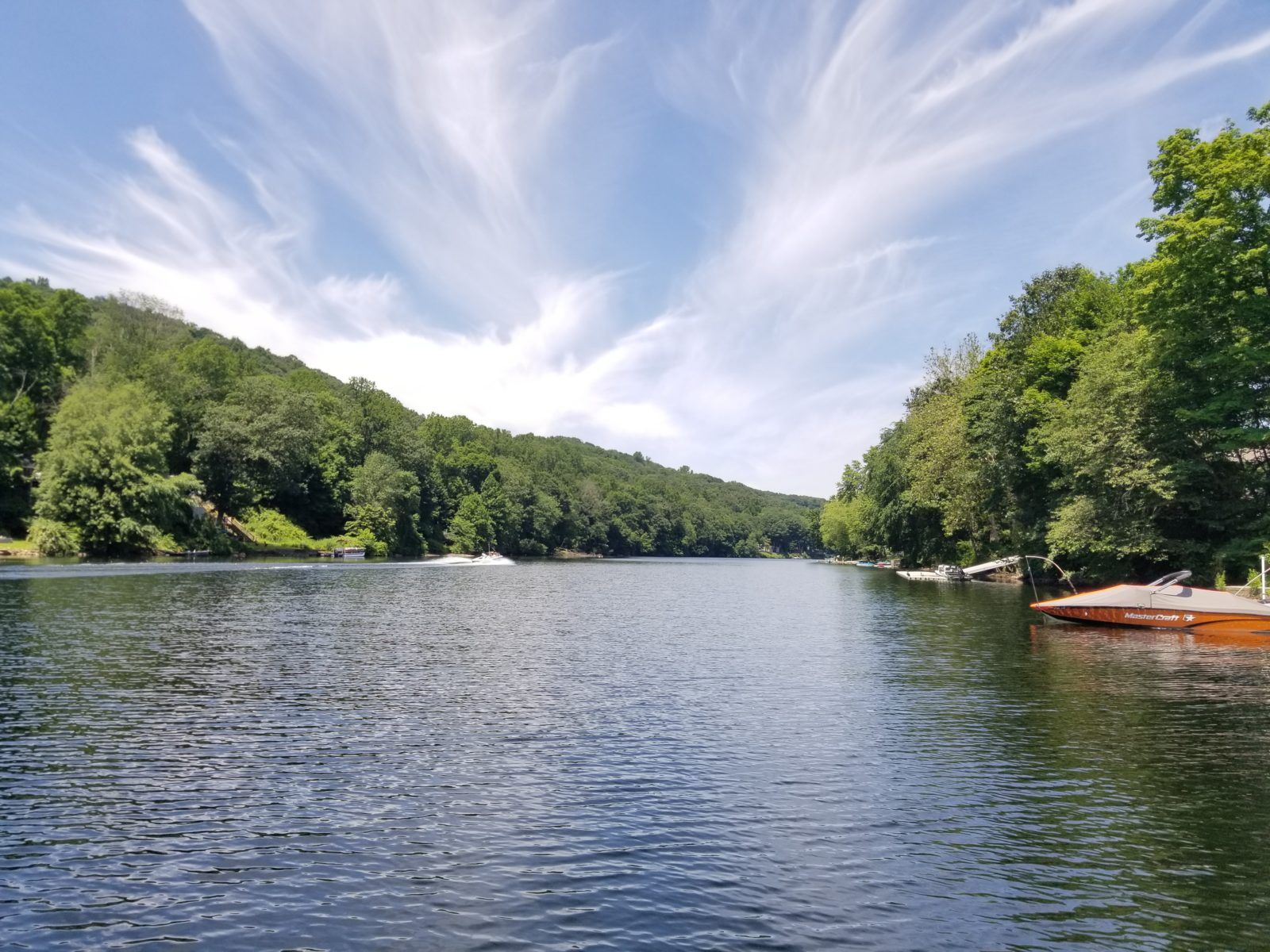The Key to a Successful Shade Garden: Plan Before You Plant
June 10th, 2013
By Sandy Phelps, Garden Design Consultant
 It is a common misconception that it is not possible to have a lovely, colorful, low maintenance garden in a shady yard. Some of the most memorable gardens I have visited have been in partial or complete shade. The most important thing to keep in mind before you begin to create your dream garden is to plan before you start. A few basic steps are all it will take to create a shady nook that will take your breath away.
It is a common misconception that it is not possible to have a lovely, colorful, low maintenance garden in a shady yard. Some of the most memorable gardens I have visited have been in partial or complete shade. The most important thing to keep in mind before you begin to create your dream garden is to plan before you start. A few basic steps are all it will take to create a shady nook that will take your breath away.
When I first moved into my current house the “garden” was a small forest with no shape or color and overtaken by invasive plants. The first winter I observed the yard and noted certain things. Where were the sunny areas, wet spots and shady nooks. What animals and birds visited my yard? Where was the best and worst soil? Only after I took these factors into consideration did I make a plan – a plan that I have worked on bit by bit over thirteen years.
 My initial step was adding a deer fence around a portion of my yard that I wanted to plant. I then had a soil test done by the local Cooperative Extension Service to see what amendments I needed to add to my soil. Next I thought about where I wanted to place the hardscape such as a patio, walkway and pond. I looked at the yard from different angles to see where I needed to place large trees and shrubs to screen out my neighbors and create a sense of privacy.
My initial step was adding a deer fence around a portion of my yard that I wanted to plant. I then had a soil test done by the local Cooperative Extension Service to see what amendments I needed to add to my soil. Next I thought about where I wanted to place the hardscape such as a patio, walkway and pond. I looked at the yard from different angles to see where I needed to place large trees and shrubs to screen out my neighbors and create a sense of privacy.
Since much of my yard is in full or part shade I had to determine how much shade each area would get over the course of a day. Filtered or light shade is the brightest category of shade. Light is filtered through fine leaves or spaced trees. Medium shade occurs when the sunlight is shaded by the shadow cast by a house, wall, fence or branches and additional foliage. The sunlight is irregular throughout the day. Deep or dense shadeoccurs when there are low branching trees or evergreens. Sunlight cannot penetrate all the way to the ground except through reflected light. Once I determined the type of shade different areas in my yard would be receiving I then selected those plants that would thrive in that particular type of shade.
The backbone of a beautiful garden lies in the woody plants that are carefully placed to add year round interest. I selected a variety of small trees and shrubs that would create four season color, added plants to attract birds and beneficial insects and included evergreens for winter interest and privacy. A few ornamental trees that could be a focal point of a well-planned shade garden are Japanese Maple, Serviceberry, Eastern Redbud, Fringe Tree, Dogwood, Witchazel, Saucer Magnolia, Stewartia and Japanese Snowbell. These flowering small trees will create structure as a well as bring color and height to a shade garden.
 Once the trees were selected for my garden I determined the shrubs that would bring structure, color and year round interest. My favorite shade loving shrubs are Carolina Allspice, Clethra, Red or Yellow Twig Dogwood, Daphne, Hydrangea, Hollly, Summersweet, Leucothoe, Andromeda, Cherry Laurel, Rhododendron, Azalea, Skimmia and Viburnum. Most of these shrubs have a softly scented flower. Hydrangeas come in a variety of colors from blues to pinks as well as many leaf shapes such as the Oakleaf Hydrangea and small tree-like Pee Gee Hydrangea with huge flower clusters.
Once the trees were selected for my garden I determined the shrubs that would bring structure, color and year round interest. My favorite shade loving shrubs are Carolina Allspice, Clethra, Red or Yellow Twig Dogwood, Daphne, Hydrangea, Hollly, Summersweet, Leucothoe, Andromeda, Cherry Laurel, Rhododendron, Azalea, Skimmia and Viburnum. Most of these shrubs have a softly scented flower. Hydrangeas come in a variety of colors from blues to pinks as well as many leaf shapes such as the Oakleaf Hydrangea and small tree-like Pee Gee Hydrangea with huge flower clusters.
Generally shade loving plants with more colorful flowers need a filtered shade garden. Some perennial plants with blue or purple flowers are Amsonia, Liriope, Iris, Lobelia, Bleeding Heart, Hardy Geranium, Phlox and Primrose. Shade gardens with all white flowering perennials are often called “Moon Gardens” as they create a silvery effect at night. White perennial flowers for the shade are Goatsbeard, Astilbe, Campanula, Hellebore, Phlox and Toad Lily. There are even perennials with yellow flowers that love the shade and brighten up the garden. Some yellow flowering plants are Corydalis, Leopard’s Bane and Daylily.
Not to be forgotten are the bulbs. In early spring before the leaves appear on trees and shrubs, bulbs poke their way up through the soil to announce that winter is over. Crocus, Winter Aconite, Snowdrops, Grape Muscari, Scilla, Bluebells and Daffodils are the first to brighten up a shade garden in spring while Lilies appear later in the summer. Easy to grow, bulbs multiply year after year with little care and in time will fill a shady nook with color.
Armed with all this information on the type of shade in my garden, where hardscape and privacy screening should be placed and what trees, shrubs and perennials would bring color and interest to my garden, I created an overall plan for the placement of each item. I divided my yard into zones and tackled only one or two projects a year. The ambitious plan was less daunting in small pieces and also more cost friendly.
The final step to put into place was to create a maintenance plan to keep my garden looking its best. I researched how to prune, feed and water each plant. I approached my garden maintenance just like keeping up my house or car. The key is regular maintenance. I don’t try to do it all at once or put it off until it is a jumble of weeds. In the spring a clean-up and mulch is needed to keep weeds from getting an early start. In the summer I take a weekly walk around the garden with a bucket to weed and deadhead. In the autumn I cut back dying plants and add leaf mulch. It doesn’t take much time if it is done on a regular basis.
A shade garden can be a retreat where you sit and relax on a hot, summer day. It can be the first to welcome you to spring with early flowering bulbs, trees and shrubs. Armed with knowledge about the type of shade, soil and the right plants for your yard, you can plan, plant and maintain a beautiful garden. If you want the garden of your dreams but have no time to create it, hire a knowledgeable garden consultant to access your space and design a workable plan. Then hire a qualified, certified and well recommended landscaper to do all the work for you. Take the time to plan first and then enjoy your garden for many years. Download Free Report
Since 1998, SOLitude Lake Management has been committed to providing full service lake and pond management services that improve water quality, preserve natural resources, and reduce our environmental footprint. Services are available throughout the Eastern United States. Fisheries management consulting and aquatic products are available nationwide. Learn more about SOLitude Lake Management and purchase products at www.solitudelakemanagement.com.
Sandy Phelps is a Garden Design Consultant and a trusted partner of SOLitude Lake Management. To set up a consultation for all of your lake, pond and landscaping needs, Contact the experts at 888-480-5253 or visit www.solitudelakemanagement.com.










